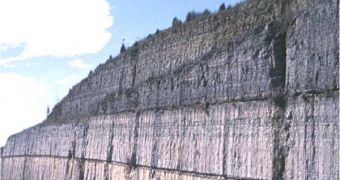For the first time, geologists and other experts are able to show precisely how volcanoes were able to bring forth a period of sustained global cooling more than 450 million years ago. Ironically, it was precisely these volcanoes that first triggered a period of global warming during these times, by erupting almost non-stop. When they did stop, the planet's climate was thrown off-balance, and the glaciers started advancing. Ohio State University (OSU) Associate Professor Matthew Saltzman believes that the find helps shed some light on the importance of carbon in the planet's crust, ScienceDaily reports.
Volcanoes in the Iapetus Ocean, the precursor of the Atlantic Ocean, are believed to be the most to blame for the giant Ice Age that swept over the planet some 450 million years ago. “Our model shows that these Atlantic volcanoes were spewing carbon into the atmosphere at the same time the Appalachians were removing it. For nearly ten million years, the climate was at a stalemate. Then the eruptions abruptly stopped, and atmospheric carbon levels fell well below what they were in the time before volcanism. That kicked off the ice age,” Saltzman explains.
The Appalachian Mountains were rising out of the crust for the first time, when these eruptions happened. The exposed layers of rocks that were withering away drew to them vast amount of carbon dioxide, almost the quantity that was being emitted in the air by the Iapetus volcanoes. This ability that they had helped create a balance that was then destroyed when the lava flows stopped. So, in a sense, researchers who said previously that the Appalachians were responsible for the period of cooling were correct. That is to say, the young mountain range continued to draw CO2 from the atmosphere
“This was not necessarily what we expected when we started investigating, but as we combined our data sources, the story began to fall into place,” former OSU doctoral student Seth Young reveals. He participated in the research as part of his doctoral work. “The ash beds start building up at the same time the Appalachian weathering begins, but then the record of volcanism ends, and the temperature drops. Knowing these details can help us understand how carbon in the atmosphere is changing Earth's climate today,” Saltzman concludes.

 14 DAY TRIAL //
14 DAY TRIAL //